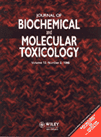
JOURNAL OF BIOCHEMICAL AND MOLECULAR TOXICOLOGY
Scope & Guideline
Exploring the Intersection of Health and Toxicology
Introduction
Aims and Scopes
- Molecular Toxicology:
Research on how chemical compounds cause toxicity at the molecular level, including studies on DNA damage, oxidative stress, and signaling pathways. - Biochemical Mechanisms:
Investigation of biochemical pathways involved in toxic responses, such as metabolic activation of toxins and cellular repair mechanisms. - Pharmacological Interventions:
Exploration of protective agents and therapeutic strategies to mitigate toxic effects, including the use of natural compounds and novel drug formulations. - Environmental and Health Impacts:
Assessment of the effects of environmental toxins and pollutants on human health and ecosystems, including risk assessments and epidemiological studies. - Cancer Research:
Studies focused on the mechanisms by which toxins contribute to cancer development and progression, including the role of microRNAs and long non-coding RNAs. - Nanotechnology in Toxicology:
Research on the application of nanomaterials in drug delivery systems and their potential toxicological effects.
Trending and Emerging
- MicroRNA and Long Non-Coding RNA Research:
There is a growing body of research exploring the roles of microRNAs and long non-coding RNAs in toxicological responses, indicating an emerging interest in epigenetic regulation in toxicity. - Oxidative Stress and Antioxidant Defense Mechanisms:
Research focusing on oxidative stress as a central mechanism of toxicity has surged, with studies investigating how antioxidants can mitigate damage caused by various toxicants. - Natural Products and Phytochemicals:
An increasing number of studies are examining the protective effects of natural compounds and phytochemicals against chemical-induced toxicity, reflecting a trend towards exploring alternative therapeutic agents. - Nanotoxicology:
Research into the toxicological effects of nanoparticles and nanomaterials is on the rise, especially regarding their interactions at the cellular and molecular levels. - Environmental Toxicology and Human Health:
There is a heightened focus on the impact of environmental pollutants and toxins on human health, including studies that link exposure to specific chemicals with health outcomes. - Neurotoxicity Studies:
Emerging themes in neurotoxicology are prevalent, particularly studies elucidating the mechanisms by which various substances induce neurotoxic effects and neuroinflammation.
Declining or Waning
- Traditional Toxicology Studies:
There has been a noticeable decrease in studies focusing solely on traditional toxicology without molecular insights, as the field increasingly emphasizes molecular mechanisms and biochemical pathways. - In Vivo Animal Models:
Research relying heavily on in vivo animal models has waned in favor of alternative methods, including in vitro studies and computational modeling, as researchers seek to reduce animal usage. - Single Agent Toxicity Studies:
The focus on the toxicity of single agents is declining as researchers are more interested in the interactions between multiple compounds and the cumulative effects of exposure to mixtures. - Chemical Structure-Activity Relationships (QSAR):
Interest in classical QSAR studies appears to be diminishing, as advanced computational approaches and machine learning techniques are increasingly preferred for predicting toxicity. - Regulatory Toxicology:
There is less emphasis on studies directed solely at meeting regulatory requirements, as the field shifts towards innovative methodologies that advance scientific understanding and therapeutic development.
Similar Journals

NEUROTOXICOLOGY
Connecting Science and Health through NeurotoxicologyNEUROTOXICOLOGY, published by Elsevier, stands at the forefront of research in the disciplines of neuroscience and toxicology, contributing significantly to the understanding of neurotoxic effects and their implications for health. With an impact factor positioned within the second quartile in both neuroscience and toxicology categories, this journal has established itself as a crucial platform for disseminating high-quality research findings and innovative methodologies. Since its inception in 1979 and continuing through 2024, NEUROTOXICOLOGY has provided valuable insights and evidence-based studies that facilitate advancements in the fields of pharmacology and neuroscience, making it a pivotal resource for researchers, professionals, and students alike. Although not an open-access publication, it offers extensive access options ensuring wide dissemination of knowledge. Located in the Netherlands, the journal’s continued commitment to excellence is evident through its high rankings in Scopus, reflecting its prominence and relevance in the scientific community.
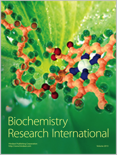
Biochemistry Research International
Advancing biochemistry knowledge for a global audience.Biochemistry Research International is a prominent and dynamic journal published by Hindawi Ltd, dedicated to advancing knowledge in the field of biochemistry. With its Open Access model established since 2010, the journal provides unrestricted access to high-quality research, thereby fostering global communication among researchers and professionals. Operating out of the United States, Biochemistry Research International serves as a vital platform for disseminating cutting-edge findings in biochemistry and molecular biology, holding a respectable Q2 ranking in its category as of 2023. The journal's scope encompasses a wide array of topics including but not limited to biochemical processes, genetic engineering, and molecular interactions, making it an essential resource for students and seasoned researchers alike. With an impact factor reflective of its significance in the academic community, Biochemistry Research International continues to play an integral role in shaping the future of biochemistry research.

JOURNAL OF APPLIED TOXICOLOGY
Pioneering Research for Public Health and SafetyJOURNAL OF APPLIED TOXICOLOGY, published by Wiley, stands as a leading platform in the field of toxicology, focusing on the rigorous examination of chemical substances and their effects on biological systems. With an impressive Impact Factor, it ranks in the top quartile (Q2) for toxicology journals, reflecting its esteemed position within the scientific community. The journal, identifiable by its ISSN 0260-437X and E-ISSN 1099-1263, has been an invaluable resource since its inception in 1981, and it continues to serve as a conduit for innovative research and practical applications through 2024. Positioned at the forefront of the field, it garners recognition in the Scopus Rankings, where it ranks #31 out of 133 journals in the toxicology category, placing it in the 77th percentile—a testament to its contribution to the advancement of pharmacology and toxicological sciences. While not an open-access journal, it remains accessible to a wide audience of researchers, professionals, and students eager to explore cutting-edge findings in applied toxicology, making it a pivotal resource for enhancing knowledge and fostering collaboration in the field.
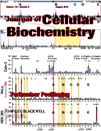
JOURNAL OF CELLULAR BIOCHEMISTRY
Advancing the Frontiers of Biochemical ResearchJournal of Cellular Biochemistry is a premier academic journal dedicated to advancing the field of biochemistry and cellular biology. Published by Wiley, this influential journal has a significant impact factor that underscores its relevance and authority within the scientific community. With its ISSN 0730-2312 and E-ISSN 1097-4644, the journal has been on the frontier of research since its inception in 1982, and is expected to continue publishing cutting-edge studies through 2024. As evidenced by its ranking in the 2023 Scopus Quartiles, it holds a rank of Q2 in Biochemistry and Q3 in both Cell and Molecular Biology, placing it among the top tiers of scientific journals in these disciplines. The Journal of Cellular Biochemistry serves as a vital resource for researchers, professionals, and students alike, providing a platform for the dissemination of innovative ideas and findings that shape our understanding of cellular processes and biochemical pathways. Though it does not currently offer Open Access options, its robust peer-review process ensures that each publication meets the highest academic standards, thus solidifying its esteemed position in the landscape of biochemical research.

Frontiers in Toxicology
Navigating the Frontiers of Toxicological DiscoveryFrontiers in Toxicology, published by Frontiers Media SA, is a prominent open-access journal dedicated to advancing the understanding of toxicological science. Established in 2019, it serves as a vital forum for innovative research, offering insights into the pharmacological impacts and toxicological profiles of various substances. With its international reach based in Switzerland, this journal has quickly ascended in the academic community, achieving a notable Q1 ranking in Pharmacology, Toxicology and Pharmaceutics (Miscellaneous) and a Q2 ranking in Toxicology as of 2023. The journal is indexed in Scopus, where it ranks #8 out of 43 in its primary category, underscoring its influence and relevance in the field. The scope encompasses cutting-edge studies on the mechanisms of toxicity, including both human and environmental impacts, making it an essential resource for researchers, professionals, and students alike. By promoting open access to high-quality research, Frontiers in Toxicology plays a crucial role in enhancing knowledge sharing and fostering collaboration across disciplines.
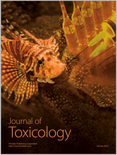
Journal of Toxicology
Disseminating vital findings for a safer tomorrow.Journal of Toxicology, published by HINDAWI LTD, stands as a pivotal open-access journal in the fields of toxicology and pharmacology since its inception in 2009. With an ISSN of 1687-8191 and an E-ISSN of 1687-8205, this journal is dedicated to disseminating high-quality research that critically examines the effects of toxic substances on living organisms. Located in Egypt and operating from their London office, it aims to provide an extensive platform for researchers worldwide to share findings that can inform better practices in safety and regulation. As of 2023, it has achieved significant recognition, holding a Q3 ranking in both the pharmacology and toxicology categories, and is indexed in Scopus with noteworthy percentile rankings (Toxicology: 57th and Pharmacology: 55th). With a focus on innovative studies and emerging areas such as environmental toxicology, biomarker research, and therapeutic interventions, the Journal of Toxicology invites both experienced researchers and students to contribute, thereby enhancing the breadth and depth of toxicological knowledge for the global scientific community.
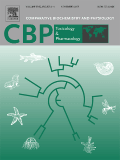
COMPARATIVE BIOCHEMISTRY AND PHYSIOLOGY C-TOXICOLOGY & PHARMACOLOGY
Innovating Insights in Comparative Toxicology ResearchComparative Biochemistry and Physiology C-Toxicology & Pharmacology, published by Elsevier Science Inc, stands as a prominent resource in the fields of pharmacology, toxicology, and biochemical research. With its ISSN 1532-0456 and E-ISSN 1878-1659, this journal has carved out a significant niche, focusing on the comparative aspects of biochemical and physiological data across various species. Recognized for its impact in diverse fields, it boasts a Q1 ranking in Animal Science and Zoology, Aquatic Science, Health, Toxicology and Mutagenesis, alongside respectable standings in other related disciplines. Researchers and professionals can leverage this publication to access high-quality, peer-reviewed studies that advance the understanding of biochemical processes and their toxicological implications. The journal aims to bridge the gap between laboratory findings and real-world applications, fostering an environment for interdisciplinary collaboration. For academics seeking to enhance their knowledge or contribute to this impactful field, Comparative Biochemistry and Physiology C-Toxicology & Pharmacology serves as an invaluable platform.

Toxins
Unveiling the science behind toxins for a healthier future.Toxins, published by MDPI, is a leading open-access journal specializing in the field of toxicology, with a strong emphasis on the health implications of toxins across various environments. Established in 2009, this journal has quickly ascended to prominence, attaining a Q1 ranking in both the Health, Toxicology and Mutagenesis and Toxicology categories, underscoring its significant contribution to the scientific community. With an impressive Scopus ranking, placing it within the top percentile of related fields, Toxins serves as a vital resource for researchers, professionals, and students dedicated to advancing knowledge in toxicology and environmental health. The journal encourages the open dissemination of innovative research and critical reviews that explore the mechanisms, effects, and management of toxic substances, thus ensuring that vital research outcomes reach a global audience. For those looking to keep abreast of cutting-edge developments in the field, Toxins is an indispensable platform for scientific exchange and collaboration.
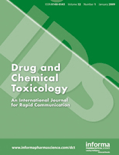
DRUG AND CHEMICAL TOXICOLOGY
Unraveling the complexities of chemical exposure.Drug and Chemical Toxicology is a well-respected journal in the fields of toxicology, pharmacology, and public health, published by Taylor & Francis Ltd. Since its inception in 1978, this journal has diligently explored the effects and mechanisms of chemical exposures on health and the environment, fulfilling a crucial role in advancing scientific understanding and safeguarding public health. The journal is indexed across prestigious databases and features an impressive array of articles categorized within the Q2 and Q3 quartiles across various categories in 2023, reflecting its significance in Chemical Health and Safety as well as Environmental and Occupational Health disciplines. With an extensive reach and a focus on interdisciplinary research, Drug and Chemical Toxicology offers a rich repository of original research, reviews, and methodological advancements, catering to a diverse audience of researchers, professionals, and students dedicated to the betterment of safety and health standards. Although not an open-access publication, its articles are widely accessible to the academic community, ensuring that critical innovations and insights are shared for the greater good.
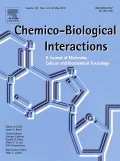
CHEMICO-BIOLOGICAL INTERACTIONS
Fostering Breakthroughs in Toxicology and MedicineCHEMICO-BIOLOGICAL INTERACTIONS is a premier journal published by Elsevier Ireland Ltd, dedicated to advancing the field of chemical and biological interactions since its inception in 1969. With a robust focus on pharmacology and toxicology, the journal holds a prestigious Q1 ranking in both Medicine (miscellaneous) and Toxicology, reflecting its significance in disseminating influential research. As part of the Scopus database, it ranks #21 out of 133 journals in Toxicology, positioning it in the 84th percentile and ensuring high visibility for cutting-edge studies. This scholarly platform serves as a crucial resource for researchers, professionals, and students who seek reliable and innovative findings at the intersection of chemistry and biology. While currently not open access, CHEMICO-BIOLOGICAL INTERACTIONS provides a comprehensive collection of articles that contribute to the ongoing dialogue in toxin research and its implications on medicinal chemistry, thereby fostering advancements in public health and safety.